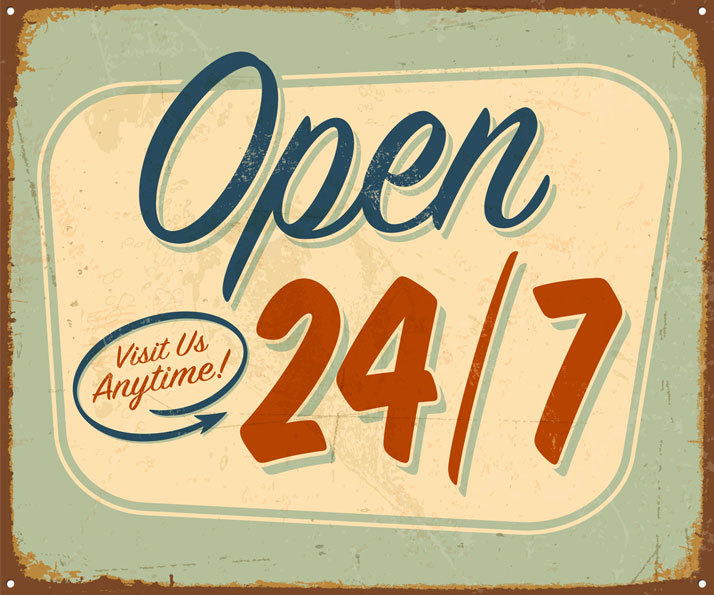
Dana Leavy-Detrick is the chief creative scribe at Brooklyn Resume Studio. This post was originally published on the Shutterstock blog and has been republished with permission.
Job seekers, freelancers, and entrepreneurs share a common need: having a well-defined digital presence that markets their unique value to the right audience.
A solid brand presence should be built around a message that answers the question: “What do I want potential employers/clients to know about me, as a professional in my field?”
Whether you’re actively job searching, changing careers, building your freelance client base, or simply looking to expand and maintain your network, cultivating a presence on the appropriate online platforms will help you increase your visibility while managing your reputation.

Developing your personal brand presence online can be broken down into four key strategies:
1) Consistency is key
Consistency is essential to your online brand, from your profile photo to your content. Professional profiles function as your digital resume, your online business card, and the first thing people will often see.
Make them polished and utilize tools that will create an excellent first impression. Be consistent in your headlines and your descriptions.
2) Create a message you can deliver on
What you say in your profiles should support the high-level ideas presented in your headlines. If you describe yourself as an “Innovative Designer & Visual Problem Solver,” explain what that means in terms of what you’ve done.
Avoid heavy claims that simply sound good on paper, unless you’re prepared to back them up with evidence and examples.
3) Manage your reputation
There are a number of services out there like Klout or Brand Yourself to help you measure the effectiveness and reach of your digital presence. Of course, there is also information that you can’t control, and it’s important to monitor what’s being published with your name attached.
Conduct a thorough Google search and set up Google alerts for your name to be notified of any mentions you may not be aware of.
4) Maintain your presence
Avoid falling into the trap of creating a one-off profile on a network and never tending to it again. Make it a point to be continually connecting with thought leaders, companies of interest, and peers in your industry. Participate in conversations, get involved in networking groups, and share interesting content and ideas of your own.
This is the quickest way to start positioning yourself as knowledgeable and in-touch with what’s going on in your field, and employers and clients are looking for evidence of that.

Here’s a breakdown of the more popular online properties and how to get the most out of each:
LinkedIn is essentially the standard when it comes to professional online networking and personal brand marketing. Its popularity and strong search functionality makes it a viable inbound marketing tool to connect you with hiring managers and potential customers sourcing for a particular specialization.
Because of the power and reach of LinkedIn’s network, your profile is one of the first entries to appear in a search engine inquiry of your name, and potentially the first place someone will encounter your profile. Use that to your advantage by having a complete profile that showcases your most marketable skills, experience, and value.
Google+
Google+ may not lead the pack in popularity when it comes to online social or professional networking, but it certainly has power.
Much like LinkedIn, when you have a profile on Google’s network, the power of Google’s own digital platform is going to ensure that your profile shoots to the top of the search results when someone does a search for your name. This means you can control one of the top entries that appears, and take advantage of that visibility and impact.
Twitter is all about sharing and influence, and offers the ability to position yourself as knowledgeable, connected, and relevant in your field through the content you share and the people with whom you engage.
Anyone can follow you, making it a strong inbound marketing tool for prospective employers and clients to find people within a particular industry, specialization, or area of interest.
Great for freelancers or independent brands, Facebook allows you to create standalone and searchable brand pages separate from your personal presence. You also have the ability to connect with pages of brands that interest you and comment on their content and postings, creating some additional visibility.
Pinterest’s platform is driven by visual content, and is a great resource for creative professionals or brands to showcase projects and share content.
For a wider populations, it provides a valuable look into an organization’s culture, as many companies create boards showcasing their latest client work, event photos, and company information.
Behance
Behance is an online portfolio platform designed for creative professionals across multiple industries such as design, illustration, fashion, and photography. Behance boasts a unique social network component that allows you to update and broadcast your work on wide scale, and connect with and follow the projects of other users.
Companies can explore work and access talent on a global level, giving you a boost of visibility and potential connection to thousands of potential employers or clients.
About.me
About.me gives you a user-friendly, easy way to create a beautifully branded web presence that connects all of your social profiles in one place, and allows users to follow one another’s pages.
As a centralized landing page for your personal brand, it also provides an extended platform for providing additional information about yourself that might not fit as well on your LinkedIn profile or resume.
YouTube/Vimeo
Video resumes can be a constructive piece of your overall presence, and sites like YouTube and Vimeo allow you to curate and share videos in one central place. You have the advantage of a large network at your fingertips, giving you wider access to a broader community.
While it’s less targeted, you can use keywords and tags to support each video you post and enhance the likelihood that you’ll come up in search results.

If you build It, they will come
Where you choose to strategically build your digital presence will depend upon your networking objectives and your target audience. Is it prospective hiring managers looking for qualified candidates within your specialization? Industry peers with whom you’re seeking to connect and build relationships? Small businesses interested in your design services?
Understand who you’re trying to reach and where they’re “hanging out” online, then give them a compelling way to connect with and follow you and your brand.
Top image credit: Shutterstock/Tarchyshnik Andrei
Get the TNW newsletter
Get the most important tech news in your inbox each week.





